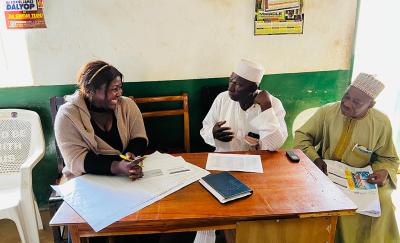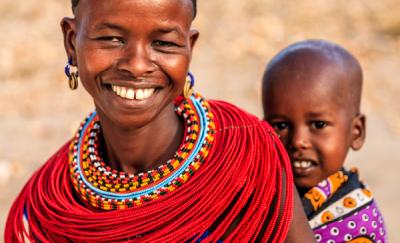Newborn Corners Save Lives in Remote Health Facilities


In the mountainous and hilly Karnali province of Nepal, Hatsinja Health Post sits on a small island in the Hima river, accessible only by a footbridge. Despite its remoteness, this 24-hour birthing center oversaw facility-based deliveries for 90 women in 2021-2022, far more than most other health posts in the municipality.
An incident one night in June 2022 helps explain why. A newborn was struggling to breathe and became hypothermic. Birendra Prasad Upadhyay, the health post in-charge, searched for transportation to take the mother and baby to a higher-level facility. But auxiliary nurse/midwife Himi Shahi used a resuscitation kit and baby warmer to stabilize the infant. She then initiated skin-to-skin contact and breastfeeding. The baby received continuous oxygen throughout the night and was breathing without assistance the next day, making a referral unnecessary.
The midwife had the training and equipment she needed thanks to the Abt-led USAID Strengthening Systems for Better Health (SSBH) Activity. Since 2018, SSBH has taken a holistic approach to support facilities like Hatsinja, including on-site coaching and mentoring on family planning and maternal, neonatal, and child health. SSBH has coached facility staff on health information systems; data collecting, recording, and reporting mechanisms; data analysis and verification; and implementing federal minimum service standards.


SSBH also has helped establish 50 Newborn Corners across Karnali and Lumbini Provinces and reached 646 health posts and primary health care centers with coaching and mentoring visits. In 2022, more than 70,000 babies received postnatal care within 24 hours of birth in SSBH-supported public health facilities in Karnali Province, and facilities in both provinces resuscitated a combined 1,112 newborns.
The new capabilities enable Hatsinja to handle a large volume of births and deal with complicated births that other centers might send to specialists. “As our health post is far from the nearest referral site, it was difficult for us to refer complicated cases which might result in the death of the child,” said Upadhyay.
To enable on-site treatment of birth complications at Hatsinja, SSBH collaborated with municipal authorities and facility leadership to install a Newborn Corner with dedicated equipment. These areas of a health facility designated for neonatal care include crucial equipment for saving young lives: at least one resuscitation table with baby warmers, high-quality suction bulbs for removing fluids from a newborn's nose and mouth, room thermometers, and sterile gloves. SSBH trained health post staff to use the new equipment and coached and mentored them on neonatal care, including how to resuscitate infants born with asphyxia.
“We can now manage complicated cases here by ourselves and save the lives of mothers and their babies,” Upadhyay said. “We felt really happy to see happiness in the face of mothers and their relatives.”
Read More

Pathways to UHC: Nigeria’s State and Local Approaches to Financing Integrated HIV Services and Primary Health Care
Nigeria’s state and local government-driven approaches to integrated primary health care are transforming financial protection and access for vulnerable populations, setting a replicable model for sustainable universal health coverage.

Diabetes, Hypertension, Antenatal Care Among Bangladesh Women
Bangladesh needs to increase the frequency and quality of antenatal care to improve awareness of hypertension and diabetes among child-bearing women.

Beyond Borders and Building Blocks: The Future of Health Systems Strengthening
Explore the Health for All movement and the power of primary care to transform the future health systems in this mini-Master Class with Kelly Saldana.

Global Health – February 2024
Dive into our latest global health newsletter today: new funding in the DRC, local power shifts in Peru, why we need One Health, and more!